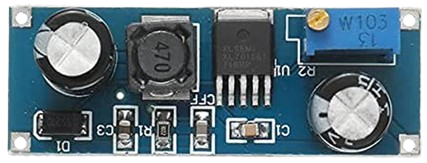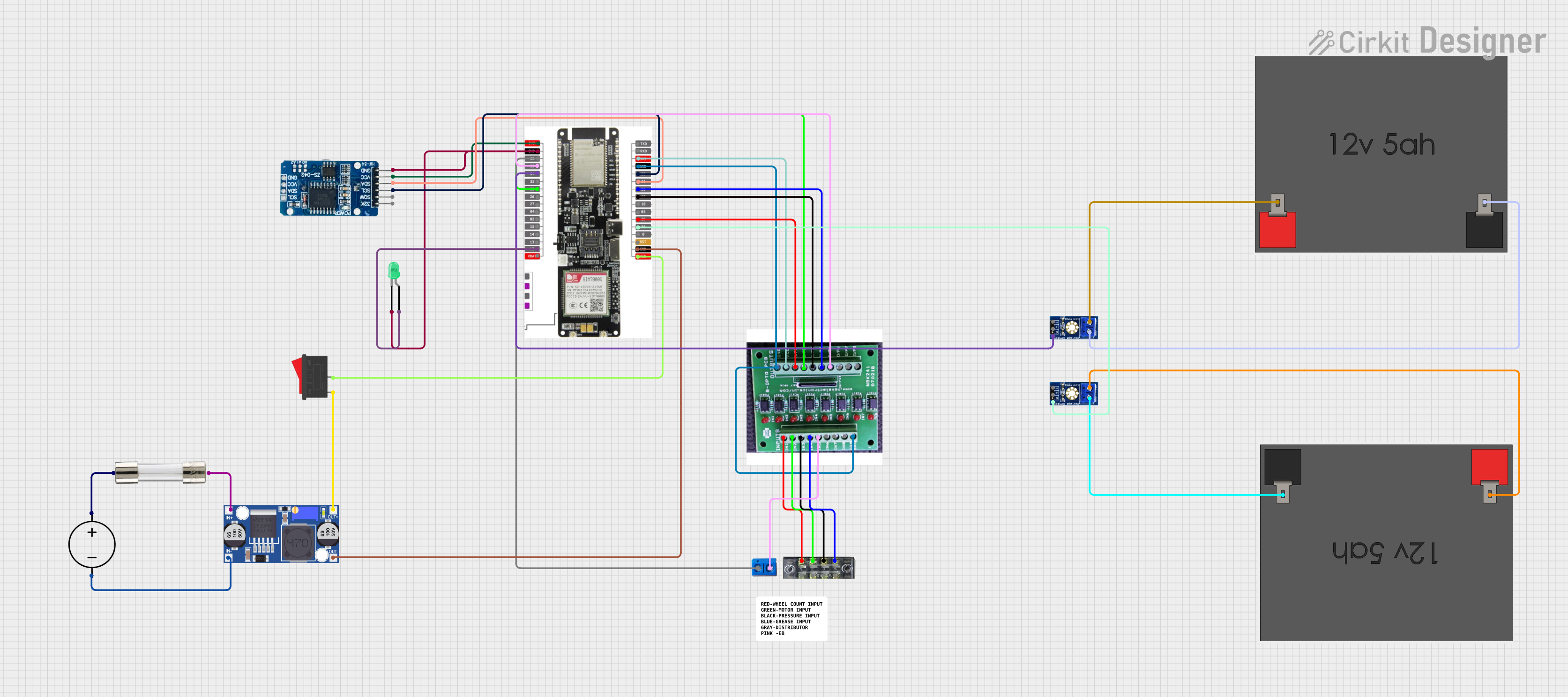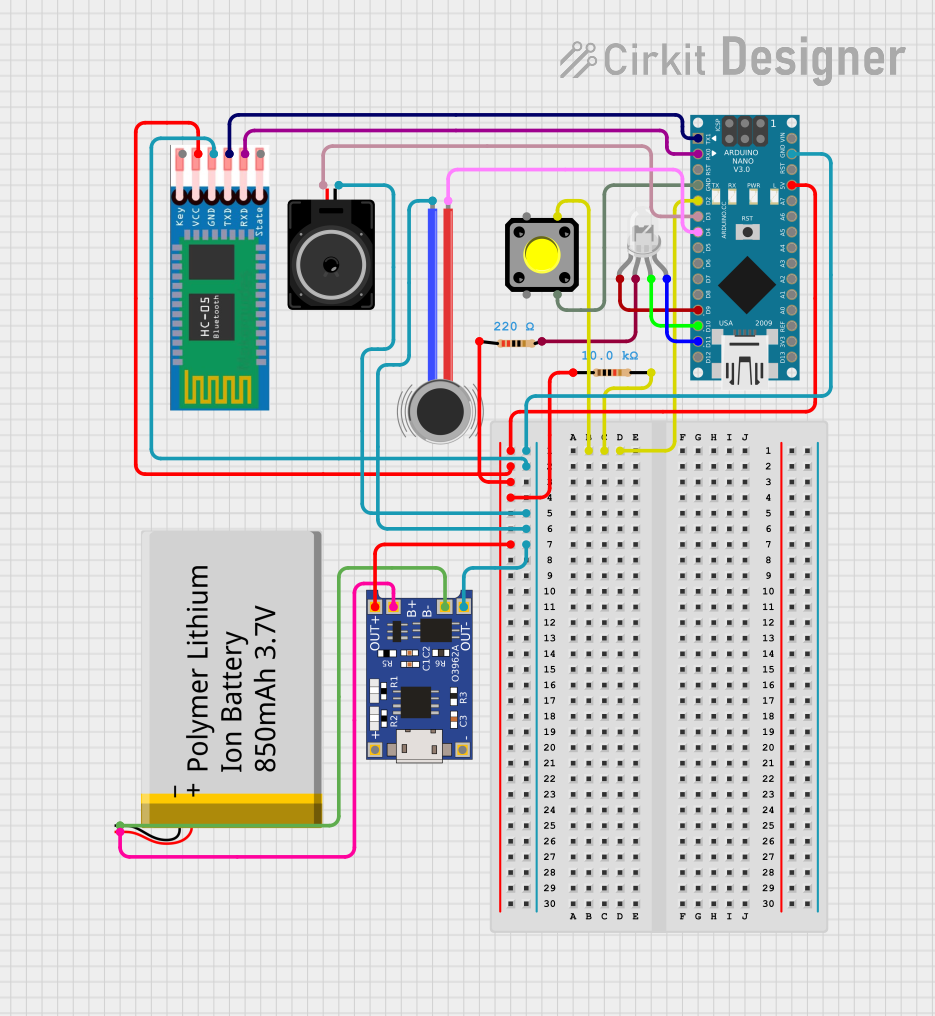
How to Use XL7015: Examples, Pinouts, and Specs

 Design with XL7015 in Cirkit Designer
Design with XL7015 in Cirkit DesignerIntroduction
The XL7015 is a high-efficiency step-down (buck) voltage regulator designed to convert a higher input voltage into a stable, lower output voltage. It is widely used in applications requiring a regulated power supply, such as battery-powered devices, industrial equipment, LED drivers, and embedded systems. With its integrated high-performance switching circuitry, the XL7015 offers excellent efficiency and thermal performance, making it suitable for compact and energy-sensitive designs.
Explore Projects Built with XL7015

 Open Project in Cirkit Designer
Open Project in Cirkit Designer
 Open Project in Cirkit Designer
Open Project in Cirkit Designer
 Open Project in Cirkit Designer
Open Project in Cirkit Designer
 Open Project in Cirkit Designer
Open Project in Cirkit DesignerExplore Projects Built with XL7015

 Open Project in Cirkit Designer
Open Project in Cirkit Designer
 Open Project in Cirkit Designer
Open Project in Cirkit Designer
 Open Project in Cirkit Designer
Open Project in Cirkit Designer
 Open Project in Cirkit Designer
Open Project in Cirkit DesignerCommon Applications
- Battery-powered devices
- LED lighting systems
- Industrial control systems
- Embedded systems and microcontroller-based projects
- DC-DC power conversion in automotive and robotics applications
Technical Specifications
The XL7015 is a versatile component with the following key technical details:
| Parameter | Value |
|---|---|
| Input Voltage Range | 5V to 80V |
| Output Voltage Range | 1.25V to 20V |
| Maximum Output Current | 0.8A |
| Switching Frequency | 180 kHz |
| Efficiency | Up to 96% |
| Operating Temperature | -40°C to +125°C |
| Package Type | TO-220-5L |
Pin Configuration and Descriptions
The XL7015 comes in a TO-220-5L package with the following pinout:
| Pin Number | Pin Name | Description |
|---|---|---|
| 1 | VIN | Input voltage pin. Connect to the unregulated DC input voltage. |
| 2 | SW | Switching output pin. Connect to the inductor and freewheeling diode. |
| 3 | GND | Ground pin. Connect to the system ground. |
| 4 | FB | Feedback pin. Used to set the output voltage via a resistor divider network. |
| 5 | EN | Enable pin. A high signal enables the regulator, while a low signal disables it. |
Usage Instructions
How to Use the XL7015 in a Circuit
- Input Voltage: Ensure the input voltage (VIN) is within the range of 5V to 80V.
- Output Voltage Setting: Use a resistor divider network connected to the FB pin to set the desired output voltage. The output voltage can be calculated using the formula: [ V_{OUT} = V_{REF} \times \left(1 + \frac{R1}{R2}\right) ] where ( V_{REF} ) is typically 1.25V.
- Inductor and Diode Selection: Choose an appropriate inductor and freewheeling diode based on the desired output current and voltage.
- Capacitors: Add input and output capacitors to stabilize the circuit and reduce noise. Use low-ESR capacitors for better performance.
- Enable Pin: Connect the EN pin to VIN or a control signal to enable or disable the regulator.
Example Circuit
Below is a basic circuit diagram for the XL7015:
VIN ----+----+----+----+----+----+----+----+----+----+----+----> VOUT
| | | | | | | | | | |
[CIN] [L] [D] [R1] [FB] [R2] [COUT]
| | | | | | | | | | |
GND GND GND GND GND GND GND GND GND GND GND
Arduino UNO Example Code
The XL7015 can be used to power an Arduino UNO. Below is an example code snippet to monitor the output voltage using the Arduino's ADC:
// Define the analog pin connected to the output voltage divider
const int voltagePin = A0;
// Reference voltage for ADC (5V for Arduino UNO)
const float referenceVoltage = 5.0;
// Resistor divider values (adjust based on your circuit)
const float R1 = 10000.0; // Resistor connected to VOUT
const float R2 = 2000.0; // Resistor connected to GND
void setup() {
Serial.begin(9600); // Initialize serial communication
}
void loop() {
int adcValue = analogRead(voltagePin); // Read ADC value
float voltage = (adcValue / 1023.0) * referenceVoltage; // Convert to voltage
float outputVoltage = voltage * ((R1 + R2) / R2); // Calculate actual VOUT
// Print the output voltage to the serial monitor
Serial.print("Output Voltage: ");
Serial.print(outputVoltage);
Serial.println(" V");
delay(1000); // Wait for 1 second before the next reading
}
Important Considerations
- Thermal Management: The XL7015 can generate heat during operation. Use a heatsink or ensure proper ventilation to prevent overheating.
- Inductor Selection: Choose an inductor with a current rating higher than the maximum output current to avoid saturation.
- PCB Layout: Minimize the trace length between the VIN, SW, and GND pins to reduce noise and improve efficiency.
Troubleshooting and FAQs
Common Issues and Solutions
No Output Voltage
- Cause: The EN pin is not connected or is held low.
- Solution: Ensure the EN pin is connected to VIN or a high signal.
Output Voltage is Unstable
- Cause: Insufficient input or output capacitance.
- Solution: Add low-ESR capacitors to the input and output.
Excessive Heat
- Cause: Overloading or poor thermal management.
- Solution: Reduce the load current or add a heatsink.
Incorrect Output Voltage
- Cause: Incorrect resistor values in the feedback network.
- Solution: Verify and adjust the resistor divider values.
FAQs
Q: Can the XL7015 be used with a 12V battery?
A: Yes, the XL7015 can step down a 12V input to a lower voltage, such as 5V or 3.3V, depending on the feedback resistor configuration.
Q: What is the maximum output current of the XL7015?
A: The XL7015 can provide a maximum output current of 0.8A.
Q: Is the XL7015 suitable for powering microcontrollers?
A: Yes, the XL7015 is ideal for powering microcontrollers like Arduino, provided the output voltage is set correctly.
Q: Can the XL7015 operate without a heatsink?
A: It depends on the load current and input voltage. For high-power applications, a heatsink is recommended to prevent overheating.